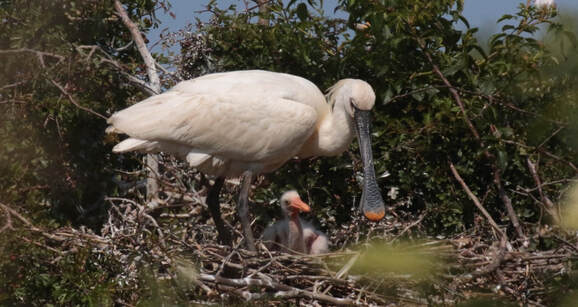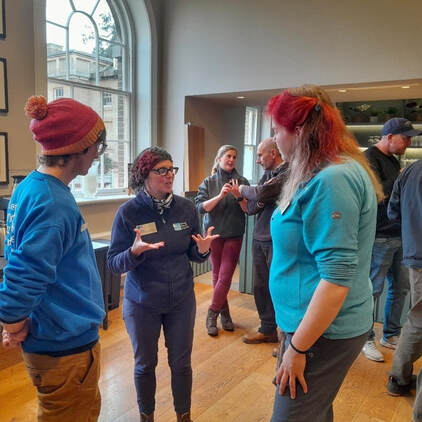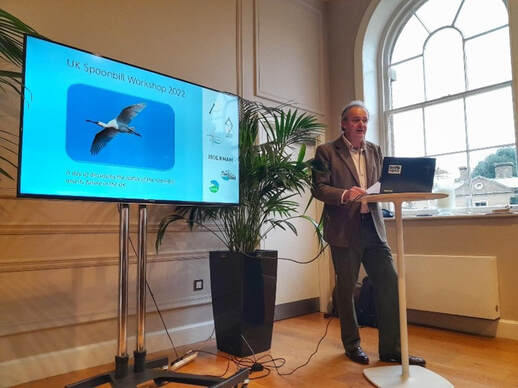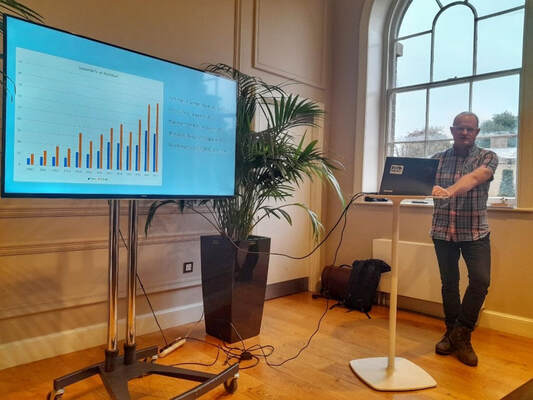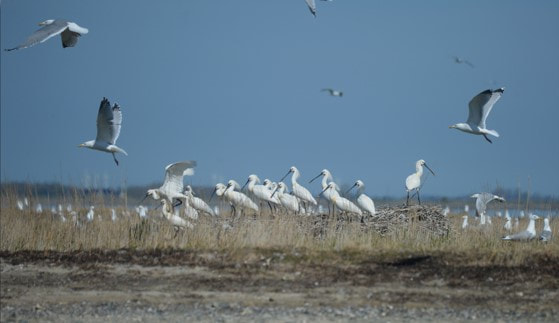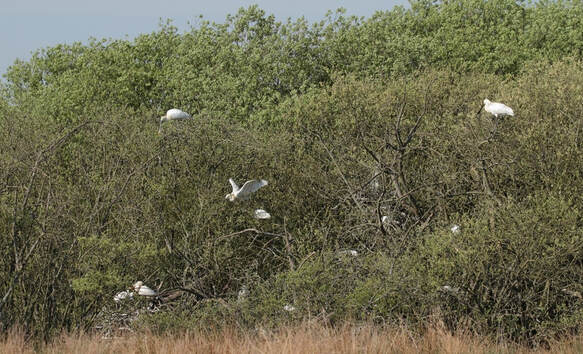|
Blog by Lizzie Bruce, RSPB Senior Project Manager (seconded) Spoonbills were once a common site across England and Wales, so common that they would be served at banquets as a delicacy. However, the draining of the East Anglian Fens and continued hunting drove the species to extinction in the UK, with the last nesting attempt in 1668 at Trimely, Suffolk. Fast-forward three hundred years to 1997 Spoonbills attempted to nest once again in east England but it wasn’t until 2010 when a regular colony became established at Holkham National Nature reserve, in Norfolk. Breeding Spoonbills (credit Andy Bloomfield) Today, the UK population has increased to 69 pairs, with colonies found in Essex, Suffolk, Norfolk, Yorkshire, and Cumbria. The recolonisation is likely to be linked to the growing population in the Netherlands and the restoration of wetlands in the UK. But also, the dedication of reserve staff, in particular Andy Bloomfield, Senior Warden of Holkham National Nature reserve who has been instrumental in better understanding the ecology and behaviour of spoonbills in the UK, translating this into conservation action. At the end of 2022, 50 conservationists across England came together at Holkham to attend the first UK Spoonbill Workshop. Developed by Andy, hosted by Holkham Estate and with support of LIFE on the Edge, the workshop aimed to discuss the status of the Spoonbill and its future in the UK. Networking with colleagues (credit Steve Rowland) We began the day with Lord Leicester, providing an overview of his family estate at Holkham, sharing insights into how the land has been managed over time and the odd recipe from old game cooking books. Lord Leicester opening the Spoonbill workshop. (credit Steve Rowland) The first session focused on Norfolk Spoonbills with Andy providing an overview of Spoonbills at Holkham Estate and the wider Norfolk landscape. 2022 was a momentous year for Norfolk Spoonbills with two further sites successfully fledging young. One of which was in a woodland neighbouring Norfolk Wildlife Trust Cley Marshes Nature Reserve. George Baldock, NWT Warden, and Alice Littler, owner of the woodland, shared with us their joy and excitement in discovering breeding Spoonbills within the heronry. Andy Bloomfield (credit Steve Rowland) Moving out of Norfolk for the second session, we hopped across the border to Suffolk which is home to the UKs only ground nesting colony of Spoonbills. With good numbers of summering Spoonbills various methods were trialled to encourage them to breed, including the use of decoy birds and artificial tree platforms. In 2019 Spoonbills opted to nest underneath the platforms! However, ground predation has been a problem, so an in-ditch predator exclusion fence was installed increasing the success of the Spoonbills and the Herring Gull colony they nest within. We moved north to RSPB Fairburn; a site where spoonbills first bred in 2017. So far, this is the UK’s most inland colony, commuting along the M62 to feed on The Humber Estuary. With an established Spoonbill colony, plans are in place to create further safe areas at Fairburn and neighbouring wetland sites. Finally, we moved northwards once more, with an overview of Spoonbills in the north of England & southern Scotland. Here there have been several nesting attempts within mature unmanaged wetland sites close to the estuaries. Success has so far been limited. We finished the morning with an overview of the wintering population of Spoonbills at Poole Harbour, which currently peaks at around 80 birds. In Poole Harbour, the Spoonbills favour the less disturbed areas, so with high levels of disturbance, especially during the warmer spring & summer months this maybe part of the reason as to why they have yet to stay and breed in recent years. After lunch we enjoyed a pre-recorded talk from Petra de Goeij, who provided an in-depth overview of Spoonbills in western Europe. The population has grown from 500 pairs in the mid 1980’s to approximately 9500 pairs today. On the mainland in Netherland’s Spoonbills were experiencing high levels of predation, however they have since discovered the predator free islands within the Wadden Sea, resulting in the population going from strength to strength. In the Wadden sea the Spoonbill population is primarily ground nesting within saltmarshes and Herring Gull colonies. Spoonbills nesting within Herring Gull colony, Wadden Sea (credit Jan Skriver) Traditionally Spoonbills have migrated south through France, Spain, Morocco to Mauritania. However, through colour-ringing studies it has been shown that there is higher survival when birds winter in Europe, compared to migrating south to Mauritania & Senegal. Over time more Spoonbills are now wintering in the Netherlands, rather than migrating south. We finished the day with an overview of Spoonbill Ecology from Graham White, which neatly summarised the day’s talks. Key take home messages
Typical nesting habitat of Spoonbills Image credit: Andy Bloomfield The future
For managers with breeding Spoonbills Protect and manage your existing nesting areas ensuring:
For managers of potential Spoonbill breeding sites
In conclusion it was an inspiring day, bringing together conservationists across England who are working on the ground to protect and restore species such as the spoonbill for years to come.
0 Comments
Leave a Reply. |
Archives
April 2024
Categories
All
Photo credits: Oystercatcher by Katie Nethercoat (rspb-images.com)
LOTE Logo credits: Saskia Wischnewski |

